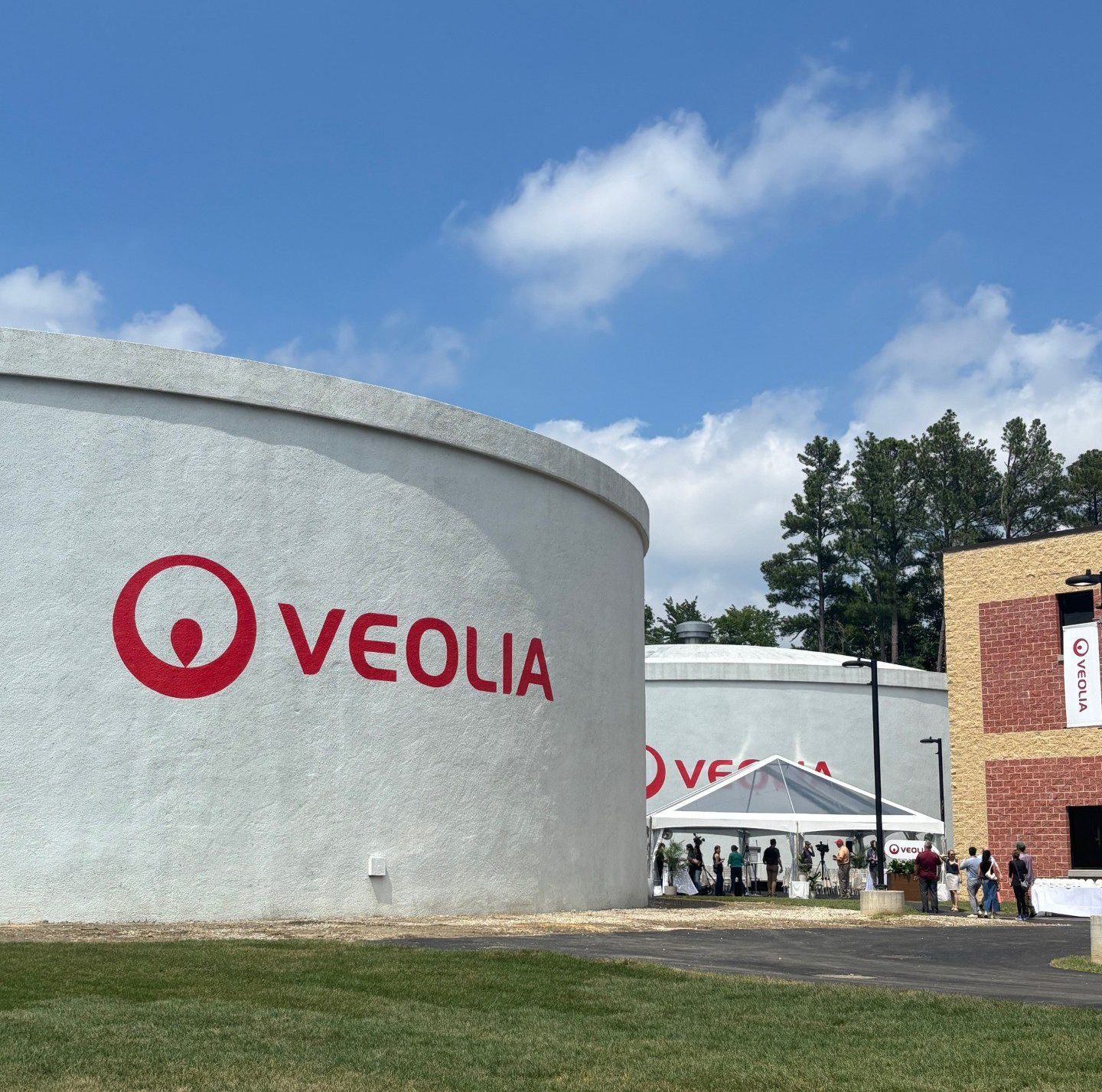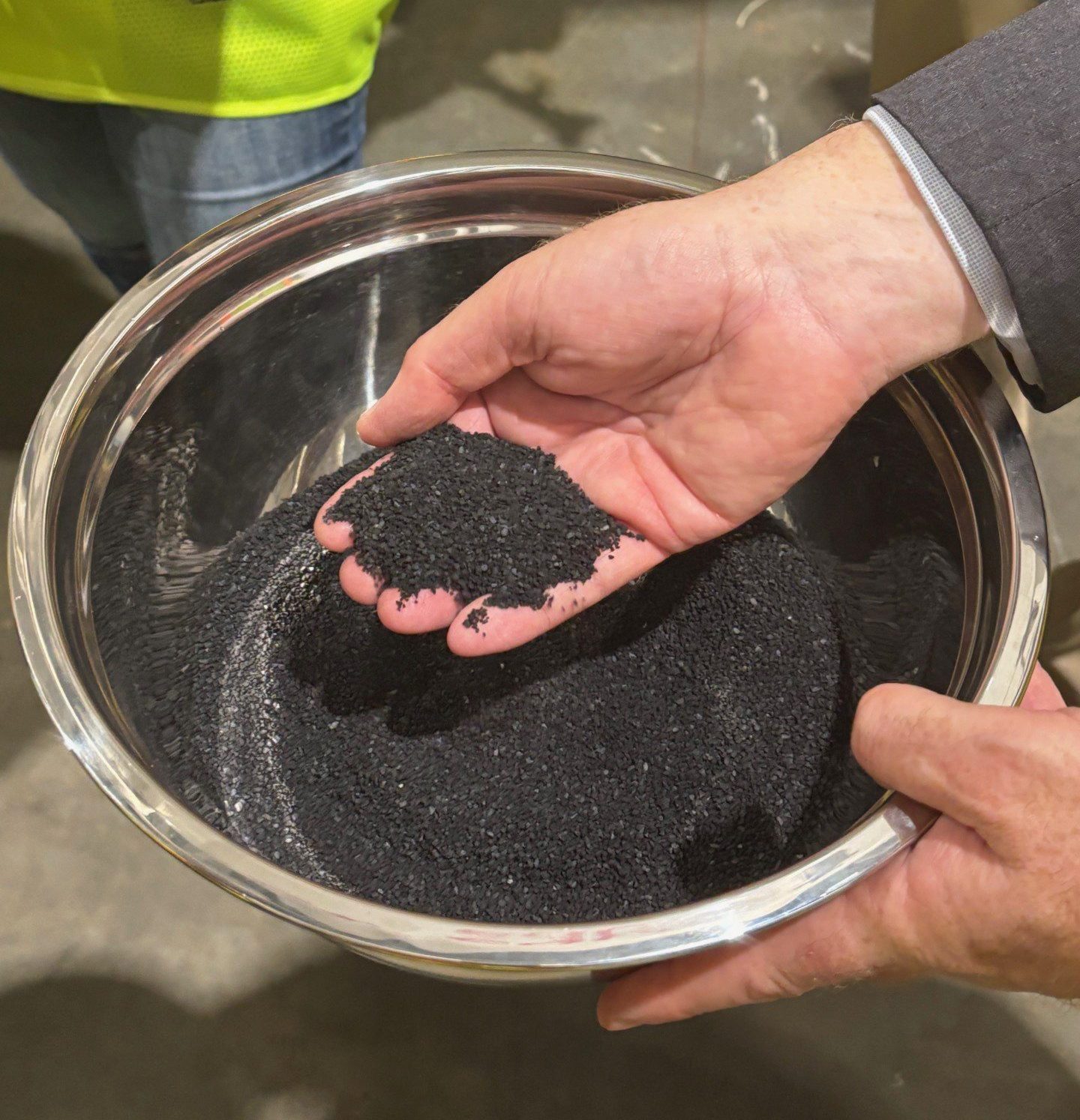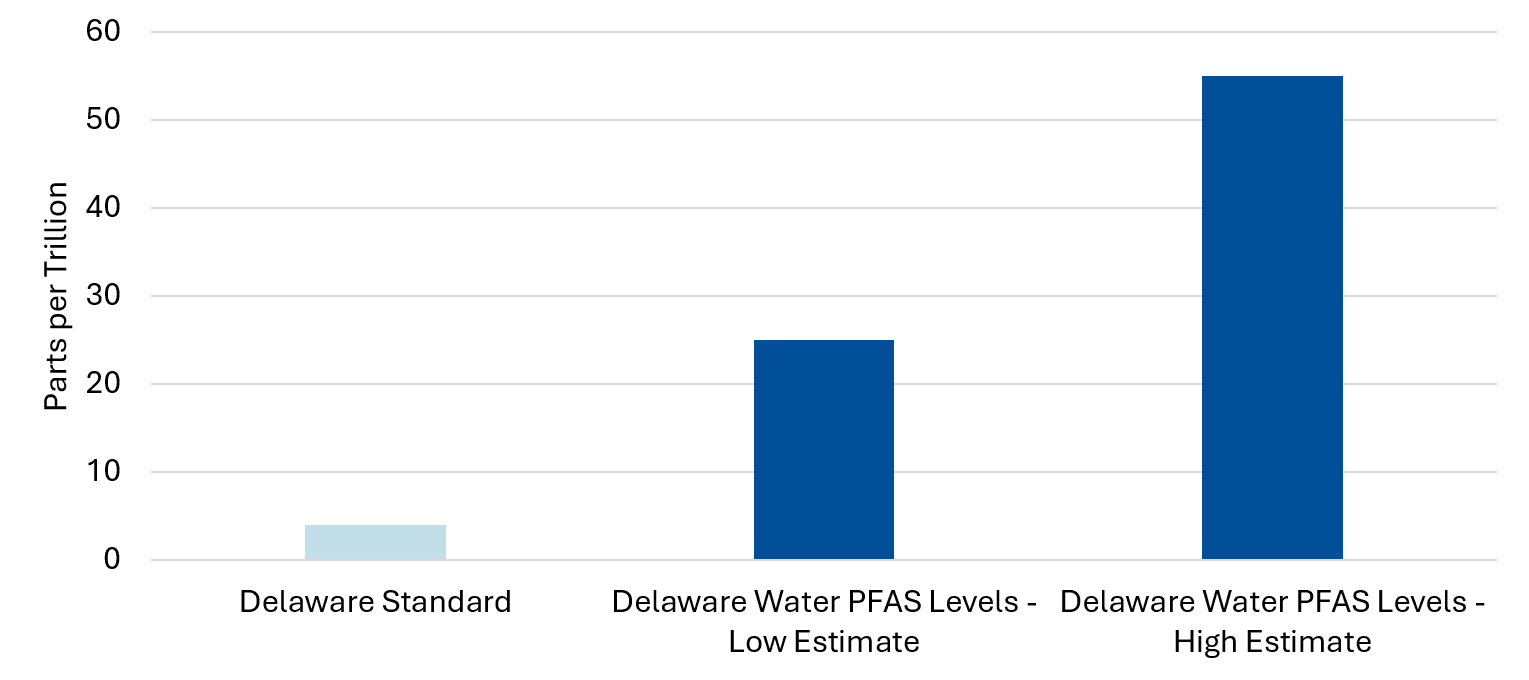
On June 18, Atlas attended the ribbon cutting of Veolia’s PFAS water treatment plant in Delaware. The new Stanton Water PFAS Treatment Facility is one of the largest of its kind in the United States, able to treat up to 30 million gallons of water for 140,000 Delawareans every day (Figure 1).
Veolia invested $35 million in the project, which took three years to complete from design to planning to construction. The project was designed around Delaware’s state regulations for PFAS contaminant levels of four parts per trillion, which mirror the first-of-its-kind PFAS regulations that came out of the Biden Administration’s EPA. These standards for PFOA and PFOS, the most common PFAS found in the United States, will be kept by the Trump Administration’s EPA however the agency plans to extend the horizons of compliance from 2029 to 2031. The Trump administration is considering a potential rescission of the regulations for less common PFAS. The Stanton facility went online in March 2025.
Figure 1: Filtration Vessels Inside the Stanton Water PFAS Treatment Facility

Source: Atlas Public Policy.
In a tour of the new facility, Mid-Atlantic Regional President of North America at Veolia Larry Finnicum described how the regulation hockey rink-sized facility removes PFAS via a pressurization treatment. Granular activated carbon — manufactured by the Calgon Carbon Corporation (Figure 2) — is currently employed to extract PFAS before water is sent out to distribution centers. Filters are backwashed to clean the media in each of the 42 filtration vessels, which altogether hold 1.6 million pounds of activated carbon. Finnicum added that Veolia is currently investigating options to regenerate the carbon at an external facility or dispose of it in an environmentally friendly way.
Figure 2: Calgon’s Granular Activated Carbon

Source: Atlas Public Policy.
The water the facility treats has variations in contamination, with intakes between the high 20s and about 50 parts per trillion of PFAS contaminants — meaning that the facility is at a minimum able to filter between 80 and 92 percent of PFAS from source waters (Figure 3). Finnicum noted that Veolia is partnering with the state to clarify the water sources. To that end, Veolia is operating a full-scale pilot on site to continually test new filtration media that come onto the market to help treat specific PFAS found in water sources. The facility’s vessels are flexible, able to employ multiple media and to switch gears as better alternatives are discovered.
Figure 3: PFAS Standards for PFOA and PFOS

For simplicity, the standards for the two most common types of PFAS found in the United States are visualized here. Other PFAS standards exist, such as the 10 parts per trillion standards for PFHxS, PFNA and GenX established by the Biden EPA.
The upgraded facility will mean higher bills for the one in ten Delawareans it will serve. Currently, customer rates are about $40 a month. The highest possible rate increase allowable by Delaware’s Public Service Commission (PSC) is 44 percent. If that increase were approved by the PSC, it would mean a $19 increase for customers monthly. Finnicum added that the PSC is set to decide on the rate increase later this year, and that Veolia is determined to provide the best value to Delawareans while effectively removing PFAS.
The facility has not and will not receive any local, state, or federal financial assistance, meaning that the development is largely ratepayer funded, as described by Governor of Delaware Matt Meyer during the event’s opening remarks. Rob Powelson, President and Chief Executive Officer for the National Association of Water Companies, highlighted the $10 billion made available for PFAS treatment through the Infrastructure Investment and Jobs Act. That funding may make similar upgrades possible for public utilities nationwide. In this context, Powelson described the Stanton facility as a “national role model.”
Estelle Brachlianoff, Chief Executive Officer of Veolia, noted that others are looking to how the United States is approaching PFAS treatment. Using his experience in wastewater treatment from his eight-year tenure as the New Castle County Executive, Governor Meyer emphasized the equity and public health principles inherent in ensuring the populace can trust their residential water systems. Governor Meyer said, “There is nothing more important than making sure clean water comes in … there are no sides in this battle, a battle of safety.”


